Introduction
Estée Lauder is an American beauty company that operates worldwide, selling its products via a variety of channels. Founded in 1946 by the eponymous beautician, it focuses on premium products that use high-quality ingredients and deliver superior results at an appropriate price. It produces skincare, makeup, perfume, and hair products that serve a variety of purposes, from skin and eye revitalization to purely cosmetic items and a variety of fragrances.
Most of its products appeal primarily or exclusively to women, and it does not offer any male-oriented products. The company also has a substantial presence on social media, both directly and through channels such as influencers. However, there are also some issues in its usage of the internet, which warrant attention. The purpose of this report is to evaluate the company’s social media performance and suggest a potential four-week promotional campaign that will capitalize on its strengths while addressing the weaknesses.
Target Markets
Estée Lauder’s primary target market consists of middle-class women who are middle-aged or above. At this age, they are starting to worry about the decline of their appearance more intensely than before and seeking ways to slow down, halt, or reverse the process. As such, the company’s extensive range of products meant to revitalize skin and hair appeals to them strongly, especially given the company’s long history and established reputation.
Having lived for some time, these customers likely have well-established lives with considerable income or savings. As such, they can afford to consider more expensive products even if they are overall budget-conscious as long as the product delivers tangible results. With that said, this customer category is overall not likely to use social media or confine themselves to platforms less oriented toward young users, such as Facebook.
Estée Lauder’s secondary target market is middle-to-high-class young women who lead active social lives. These customers are interested in the latest fashion trends, which include cosmetics, and want to preserve and improve their appearance over time. Moreover, they have the money to spend on relatively expensive, premium products and are used to spending large sums on shopping. They seek the appearance of exclusivity and prestige that brands such as Estée Lauder create, even if it is not on the same level as a true luxury brand (Laham, 2020). The social activity of the target market likely leads them to participate actively in social media, where they can demonstrate their best side to the world. As a result, they are highly attuned to social media marketing tactics, as this customer type likely uses celebrities and influencers to gauge the overall fashion sentiment.
Critique of SEO Best Practices
Overall, Estée Lauder’s website is easily discoverable via direct name entry in a number of search engines. It is the first result when the query is entered with or without the accent over the letter. The preview for the website also explicitly lists keywords relevant to the company, both in the title and in the description. Custom sub-links are available that refer customers to several high-traffic areas of the site, each with its own short description. With that said, the company is not necessarily easily discoverable via queries for genetic cosmetics terms such as “beauty products.” The author has been unable to locate it in the first five search pages on a search engine with trackers turned off to eliminate bias. However, they have been able to find a variety of other brands, including Estée Lauder’s direct competitor, M·A·C Cosmetics.
The website is well-designed and easy to navigate, though it is missing some pages one would normally expect from a company. Notably, when the author tried to find a description of the company’s history, they were not able to do so and only found some passing mentions on other pages. With that said, such a page is not necessarily the brand’s primary focus, and its sales pages are well-designed and provide extensive information to help the customer choose an appropriate product and purchase it directly from the website. In terms of SEO guidelines as established by Google (“Webmaster guidelines,” 2021), Estée Lauder is overall compliant and provides a comfortable browsing experience that is also accessible to web crawlers. With that said, there is the notable exception of load speeds, which the author has found overall very slow and disruptive for the experience.
Social Media Integration with the Site
Estée Lauder has a number of ways to contact the brand and engage with it on its website. These methods include five social media platforms: Facebook, Twitter, Pinterest, Instagram, and YouTube (“Estée Lauder,” 2021). With that said, it should be noted that these links are represented by extremely small icons and relegated to the bottom right corner of the website, which itself is quite lengthy. Many images on the site also have links to social media platforms that appear when one hovers over them, but the images are available on the site, making the redirects mostly moot. As such, it means that, instead of trying to actively direct customers to its social media, Estée Lauder leaves the links to be found by those who purposely look for them.
The website is the main focus, and social media effectively serves as a marketing channel for it. With that said, through some effort, it is possible to uncover some additional integrations, though they are minor.
As is the case for many beauty product brands, Estée Lauder has an extensive section of the website that is dedicated to stories of its products’ users as well as inspirational company workers. Some companies in the industry choose to integrate it heavily with influencers, particularly those on more image-oriented platforms such as Instagram. However, this is not the case for Estée Lauder, which focuses its corresponding section on various company enterprises done off of social media. With that said, the Discover section allows the user to filter stories into a number of categories, one of which is explicitly related to Instagram (“Instagratification,” 2021).
Still, the list that is generated is small, and many of the articles do not make their relation to the platform clear. Overall, social media integration with the company’s site is extremely weak and requires considerable improvement.
Social Media Usage Critique
Estée Lauder has a sizable presence on Facebook, which is fitting given its primary target market and its propensity for using the platform. “Home” (n.d.a) shows that the brand has 2.6 million likes and followers as well as several thousand likes and numerous comments and shares on each post. The posts on the page primarily promote the company’s different products, naming them, giving their advantages via several bullet points, and providing viewers with a link to the store page. Other types of posts include promotions of the company’s off-site events or broader messages that spread awareness of the company’s message. The brand engages with commenters actively, giving replies that, while not entirely organic, are also somewhat varied, suggesting a real writer as opposed to a set of responses. Overall, the company’s usage of Facebook is not as heavy and engaging as it could be, but it appears to have achieved sufficient results.
The company’s presence on Twitter is very similar to its Facebook profile, which has its pros and cons. Notably, “Estée Lauder” (n.d.a) has nearly 416 thousand followers, which is impressive given Twitter’s size relative to Facebook. Its posts appear to be the same as its Facebook posts, adjusted for the character limit by shortening messages and removing list items. With that said, a closer inspection of these posts reveals some potentially problematic tendencies, as the messages receive extremely low engagement on all fronts. Moreover, unlike the generally positive or inquiring comments on Facebook, the replies on Twitter appear to be primarily comprised of spam and negative comments. The brand replies to some of these messages, but Twitter’s structure prevents it from curating the feed the same way it can on Facebook. Overall, Estée Lauder’s usage of Twitter appears to be limited and ill-conceived, with audiences mostly uninterested despite following the account.
Estée Lauder’s Instagram presence is easily the largest and most successful of the three major platforms discussed. Per “Estée Lauder” (n.d.b), the brand has four million followers there, getting 4 to 10 thousand likes on photos and tens of thousands on its videos along with dozens or hundreds of comments, which are mostly positive. Along with the platform’s internal mechanics, this result may be explained by the wealth of content the company produces for the platform, much of which does not appear on the other two social media sites reviewed. As is appropriate for Instagram, it focuses much more on imagery and seems to be higher-effort overall. From a quick review of the replies, most of those answering belong to the company’s secondary market. As such, Estée Lauder’s Instagram presence can be said to be reaching its target audience effectively, with little cause for concern.
Summary
Overall, Estée Lauder’s social media presence appears to be underwhelming, though this result may be related to the behaviors of its target markets. The secondary market is active on Instagram, which may be the reason for the company’s high activity and overall success there. The primary market may use Facebook, though not as extensively or prolifically as the previous category does for Instagram, and the brand also maintains a moderately successful presence there.
However, the weak performance of the company’s Twitter account raises some concerns that may translate to other platforms. There are many successful beauty brands and influencers on the platform, which Estée Lauder is not attracting. It may be dismissing the platform’s potential as well as the unique advantages it can offer. In the same way, the company may be too attached to outdated views that hold it back from growing further on other social media.
Engagement Level Analysis
Estée Lauder’s Facebook appears impressive at first, given its 2.6 million followers. However, this figure needs to be put into perspective to determine the levels of engagement it could potentially have based on the platform. Notably, its primary competitor, M·A·C Cosmetics, has over 20 million followers, a figure that dwarfs that of Estée Lauder (“Home,” n.d.b.). However, it should be noted that, despite the far higher follower count, the likes and comments the other company gets on its posts are several times lower than those for Estée Lauder.
The reason is unclear, though one possible explanation would be that M·A·C Cosmetics posts far more frequently than Estée Lauder does, which may dilute the engagement it gets. Regardless, it appears as though there is considerable room for improvement for the brand, which is consistent with Facebook’s size.
On Twitter, no comparisons are necessary to determine that the company’s performance is severely lacking. With infrequent posts that are replicas of the company’s Facebook efforts, it fails to capture the attention of its target audience. It also does not take advantage of the various options provided by the platforms that can help boost engagement, such as retweeting or using popular hashtags. As a result, despite its relatively high follower count, the company gets hardly any engagement on its posts, and none of its promotional campaigns spread further. Moreover, users who choose to read the small number of comments there is will often see negativity or spam-like replies, which further damages their opinions of the brand. Overall, Estée Lauder’s Twitter engagement appears to be underwhelming, reminiscent of an account several orders of magnitude smaller than its follower count suggests.
Finally, on Instagram, the company’s raw statistics appear to be the best of the three platforms by far, especially when the videos are considered. However, the example of M·A·C Cosmetics has to be invoked again, as the company has 24 million followers and regularly gets between 10 and 200 thousand likes on its posts (“M·A·C Cosmetics,” n.d.). Unlike Facebook’s case, on Instagram, the competitor outperforms Estée Lauder dramatically on all fronts, suggesting that the American company has considerable room for improvement.
With that said, if Estée Lauder’s figures were to be multiplied by six to bring its follower count to that of M·A·C Cosmetics, it would have similar engagement levels. As such, it is likely safe to assert that the company’s results are not due to any fundamental flaws but rather because of a lack of overall investment and development.
Best and Worst Social Media Practices
The first best practice aspect that Estée Lauder follows is that they learn about their customer base and appeal to it effectively. As a result, the content it provides on Twitter and Instagram is different since the brand aims to capture two different audiences with the effort. The suitability of the content to each respective platform is reinforced by the amounts of followers and the engagement that the brand receives. Moreover, Estée Lauder monitors its communication channel and replies to questions and inquiries as well as other types of comments on Facebook and Twitter. As is shown in Fig. 1, it replies to every comment on Facebook, providing help to customers who need it. This type of engagement is preferred on the platform, as it helps customers connect with the brand and is suitable for the target audience.
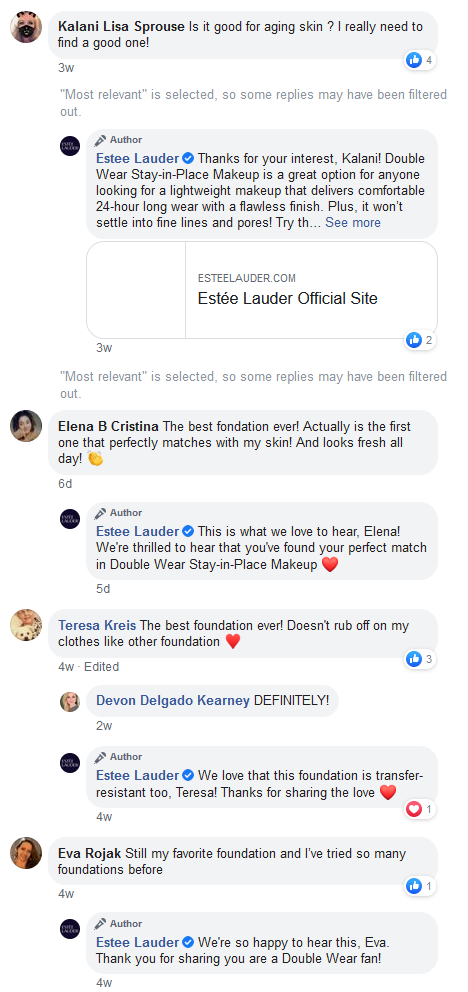
With that said, Estée Lauder’s treatment of Twitter and Facebook as highly similar platforms serves as an example of a worst practice and the results to which it leads. Twitter favors more frequent engagement as well as interactions with other platform members and participation in hashtag-driven conversations. The company’s dismissal of this paradigm has led its Twitter account to have extremely little impact, attracting next to no traffic.
Moreover, the company appears to have mostly abandoned Twitter and the appearance of its main page. Fig. 2 shows an example of an Estée Lauder tweet reply section, to which it does not respond whatsoever. As a result, malicious participants continue engaging in the behavior, driving legitimate users away from the account. Along with the low activity and the difficulty in seeing the brand’s legitimate replies to inquiries (Fig. 3), this lack of user engagement makes the account seem semi-abandoned.
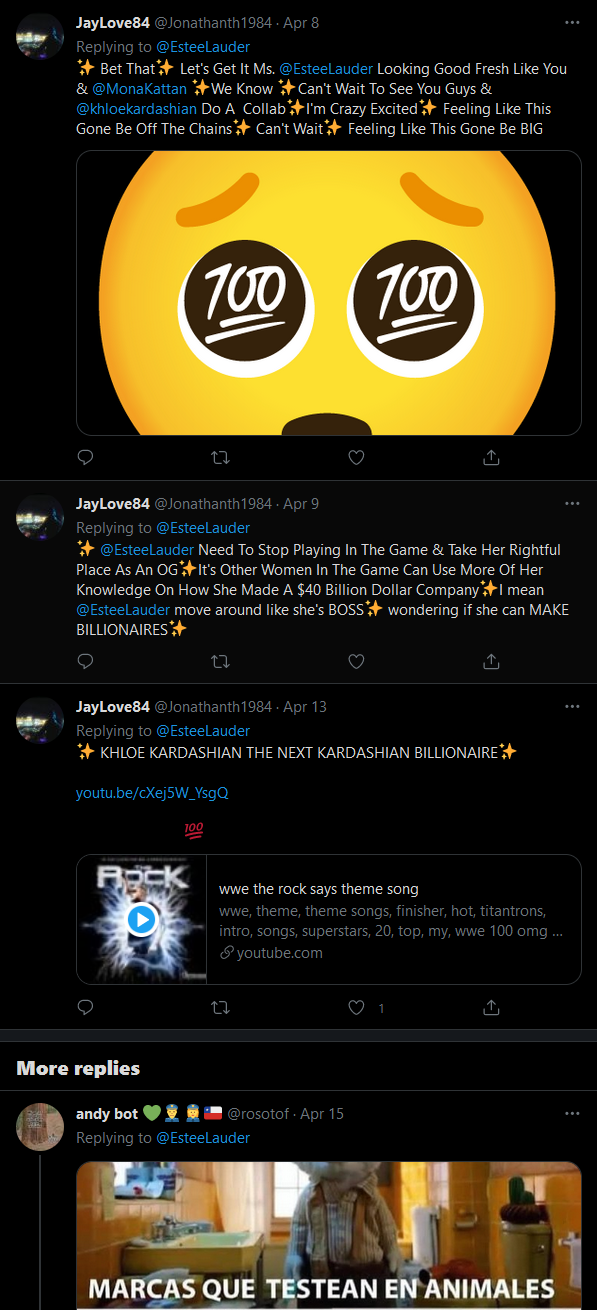
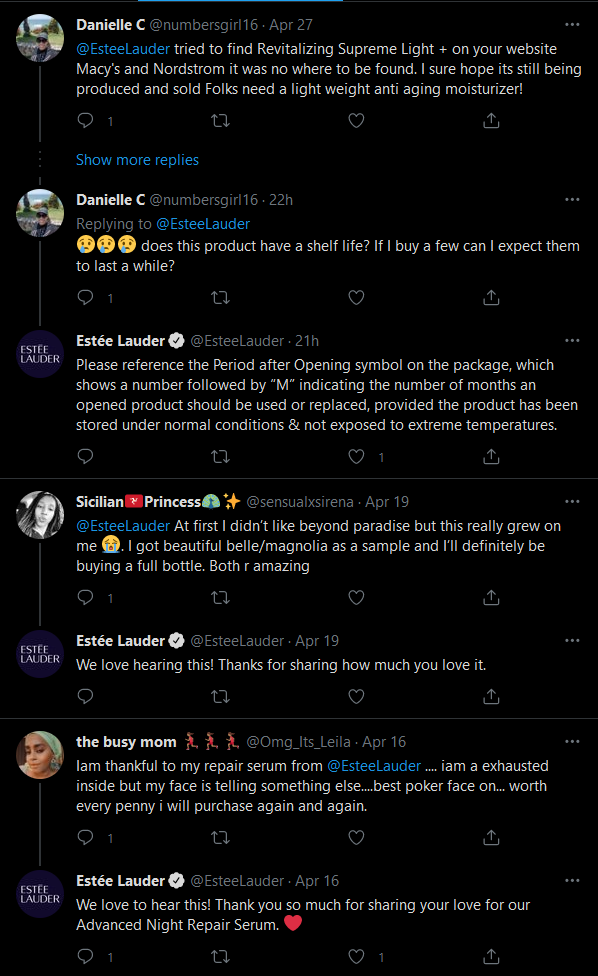
Social Media Not Being Used
The first and foremost notable omission from Estée Lauder’s social media ensemble is TikTok, the emerging but already highly popular social media platform that favors video content. It has a substantial scene on it that is interested in fashion and cosmetics, marking an excellent niche for the company to enter. It should be noted that, while Estée Lauder does not use TikTok beyond a few isolated brands, it participates in the Chinese version of the app, Douyin, and derives nearly half of its global influencer traffic from it (Rao, 2021). Overall, the company appears to be intent on establishing itself in the Chinese market and participates in the nation’s social media. Other than that, the company does not use smaller social media platforms, such as Tumblr, and appears to be focused on Instagram and Facebook in the West.
Culture-Jacking
Overall, Estée Lauder does not appear to engage in culture-jacking, staying out of current events and focusing on its main topic of cosmetics. Its accounts on Facebook and Twitter, in particular, only post promotions of its products or events very infrequently and do not respond to ongoing developments altogether. The Instagram account responds to overall cultural narratives, such as an increased emphasis on environmental friendliness.
With that said, it still does not deal with current events, preferring to focus on products and general, non-controversial statements. Considering the company’s target audience, this approach is likely optimal, as culture-jacking is associated with the risk of inviting controversy and damaging the brand’s reputation. With that said, it is a large part of success on Twitter and should at least be considered for that platform, given the failure of the current strategy.
Crisis Response on Social Media
Estée Lauder is most active on social media platforms where any negative responses will not necessarily go highly public. Moreover, as mentioned above, it tends to participate in non-controversial topics when discussing matters outside of its products, such as charity for cancer patients or environmental consciousness. As a result, the company does not necessarily invite crises upon itself in the same way many other brands have on social media. Any potentially problematic responses are addressed via prompt responses from the brand, which take place on Facebook and Twitter. The brand converses with people organically, giving appropriate replies and helping them resolve their issues. As a result, it maintains a friendly and helpful reputation and can address developing situations before they become unmanageable. The company’s social media presence has not yet been tested by a true crisis, however, so its response in such a situation is not yet known.
Crowdsourcing
Consumer-Run Blogs
There is a variety of blogs across the Web that discuss cosmetics, including those put out by Estée Lauder. There are no blogs dedicated to the company, however, which is reasonable given the product types that it offers. Overall, the responses given to Estée Lauder’s products in blogs appear to be reasonably positive. It is often compared to products from other brands and does not show outstanding performance in that regard, sometimes appearing better and sometimes losing the comparison. Another form of exposure is through makeup blogs that list the products that the writer is using when posting their pictures.
By mentioning that they have used Estée Lauder products, they reinforce the perception that the company’s products are of high quality and suitable for everyday use. With that said, the considerations above apply more to makeup than care products, which do not have effects that are as easy to demonstrate visually, especially in the short term.
Reviews
Estée Lauder products are popular, and, therefore, they have gathered a number of reviews on different platforms, such as Amazon. The company’s web store also includes a detailed review system, letting users leave information about their skincare needs as well as ratings and written opinions. Based on this information, it provides an aggregate rating as well as suggestions as to which customer characteristics the item will appeal to most. With that said, the review system is non-transparent and controlled by the company, which may be a reason not to trust it entirely. Estée Lauder does not engage with reviews on other platforms, such as Amazon, actively, either. Still, since the company’s website is an essential outlet for its sales, the degree of review integration that it provides lets customers make themselves heard and provide valuable information for the company as well as other prospective buyers.
User-Generated Content
From the paragraphs above, it is possible to infer that Estée Lauder maintains a mostly passive social media presence, keeping its interactions with followers to comment replies. As such, it does not engage in any crowdsourcing, developing and testing ideas internally before releasing them to the public. As a beauty product brand, it is reasonable to maintain this approach to its variety of skin and hair care offerings since those follow a stringent chemical makeup that can only be effectively modified by specialists. However, with regard to makeup, social media has the potential to help design products that appeal to as many customers as possible.
There are some issues with this approach, such as color accuracy, since subtle differences are highly important in the industry and many screens relay colors differently. However, it, and its applications in the beauty product industry, are still worth exploring and potentially implementing.
Critique of Current Campaign
Estée Lauder’s most recent social media effort appears to be focused on a new product by the company, the Advanced Night Repair serum. The company has made one post about it on Facebook and an identical tweet, which will be reviewed together. Due to these accounts’ infrequent posting, it is effectively impossible to isolate a series of themed posts or a promotional campaign on these platforms. Both of these posts have behaved consistently with the rest of those made on their accounts, getting average engagement levels. With that said, while the engagement on Twitter is low enough that any specific comparisons are unwarranted, on Facebook, the post’s like count is close to the lowest figure among recent messages. Overall, it appears that Estée Lauder is not putting substantial effort into its Facebook and Twitter marketing or trying to achieve strong figures.
The reason the Advanced Night Repair serum was chosen despite only a single post appearing for it on the two platforms above is Instagram, where Estée Lauder has made a series of posts promoting it. As with the other two platforms, the engagement that the posts featuring the products receives is average, with few to no outstanding results. The assumption can be made that the brand engages in marketing continuously and consistently, putting the same effort into every post that it makes.
With that said, the lack of engagement growth surrounding the product despite its continued promotion is somewhat concerning. It may indicate that visitors are responding to the brand rather than the product and are not necessarily interested in buying it, even if they are customers otherwise. As such, a revision of Estée Lauder’s Instagram strategy may be warranted to drive user attention to specific products.
Social Media Strengths
The primary strength Estée Lauder can draw upon is the number of people who follow its accounts on the different social media it uses. Currently, most of these followers do not appear to be paying attention to its posts, judging by the engagement metrics. However, as long as they keep following, the platforms where they are situated can show them the company’s posts, creating a reaction. As such, should Estée Lauder find an improved social media strategy that increases engagement, it can create a snowballing reaction that results in quick and dramatic engagement increases. Building a large and robust community can be considered the most challenging aspect of social media success. Estée Lauder’s success at doing so is a valuable asset that it can leverage in future endeavors.
Another advantage the company can leverage is its expertise in creating impressive visual displays that draw attention. Its Instagram feed is populated by professionally shot pictures and videos of its products in different artistic arrangements. It does not utilize this ability to create content on its other platforms to a sufficient degree, instead making infrequent posts with basic information about the product. Should it choose to become more active and creative with its posting, it can use its expertise to transfer content over from Instagram or create original art that is better suited toward other platforms. Overall, the components necessary for Estée Lauder to succeed in its social media marketing are already present and have contributed to its success on some media. However, its current strategy is lacking and impedes it from capitalizing on the strengths it has, a problem that requires remediation as soon as possible.
Social Media Weaknesses
The primary social media weakness that Estée Lauder is affected by is its lack of willingness to expand beyond Facebook and Instagram. Its presence is practically nonexistent in the West beyond those two platforms, with accounts on Twitter, Facebook, and YouTube having low follower counts and minuscule engagement. As a result of this lack of willingness to embrace the available platforms, the brand has not researched them adequately and failed to leverage their advantages.
Moreover, Estée Lauder has failed to embrace TikTok despite the platform’s potential high suitability for the type of product it sells. Now, to succeed on these social media and expand its presence, it will have to conduct extensive research and engage in trial and error learning. This lateness leaves it considerably behind other companies that have already established a strong social media presence on all available platforms.
The second problem Estée Lauder has is its lack of engagement with influencers, which are becoming an increasingly valuable marketing resource. Of the three platforms reviewed in this report, only the Instagram Estée Lauder account features influencers on its pages. As is mentioned above, Douyin alone accounts for 48% of its total influencer traffic, and that application is limited to China. The firm is also present on other Chinese social media, and the West, which is likely a considerably larger market, is presumably left with less than half of the total. Instead of influencers, the firm relies on celebrities and models, which, while influential, do not necessarily reach the same audiences as influencers. To expand its influence, the company should retain partnerships with the former while also engaging the latter more.
4-Week Promotional Campaign
Campaign Concepts and Platforms Used
The concept of the campaign will be “Products for your every beauty need,” as Estée Lauder offers a massive variety of different products that cater to specific skin and hair care topics in addition to its cosmetics. To demonstrate this versatility, it will gather a diverse selection of women of different ages, races, and ethnicities and show how its products help them look their best. To conduct this campaign, the company will use Facebook, Instagram, and YouTube. Over the four weeks of the campaign, it will aim to cover most or all of its beauty products.
Sample Calendar for One Week
Example Posts
Twitter:
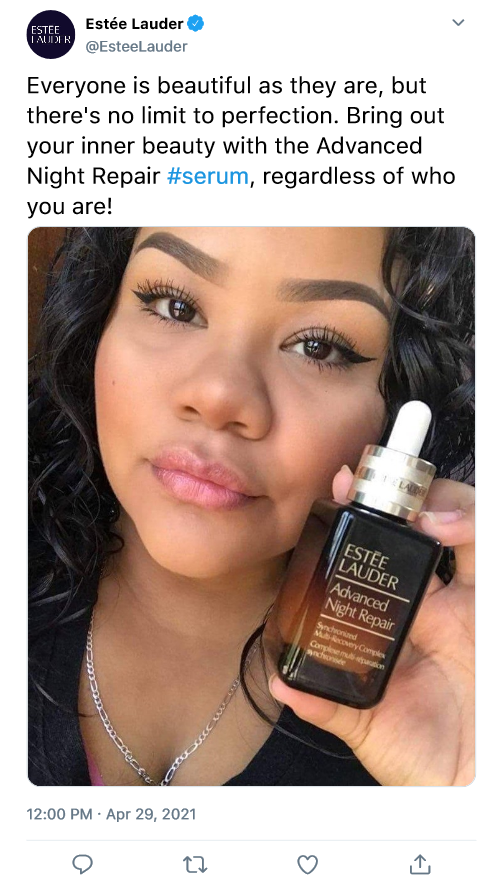
Facebook:
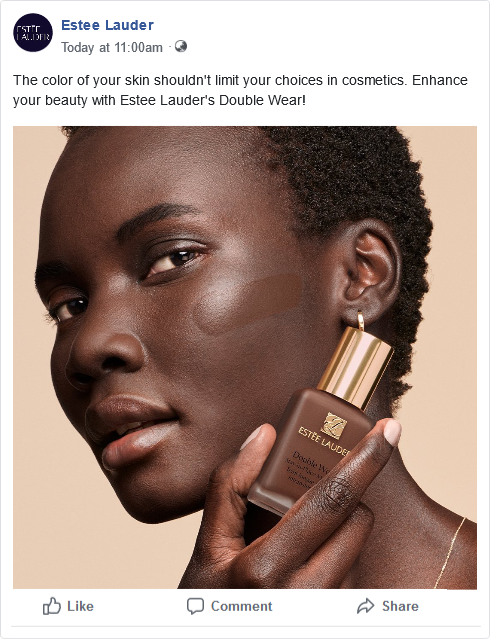
Youtube:
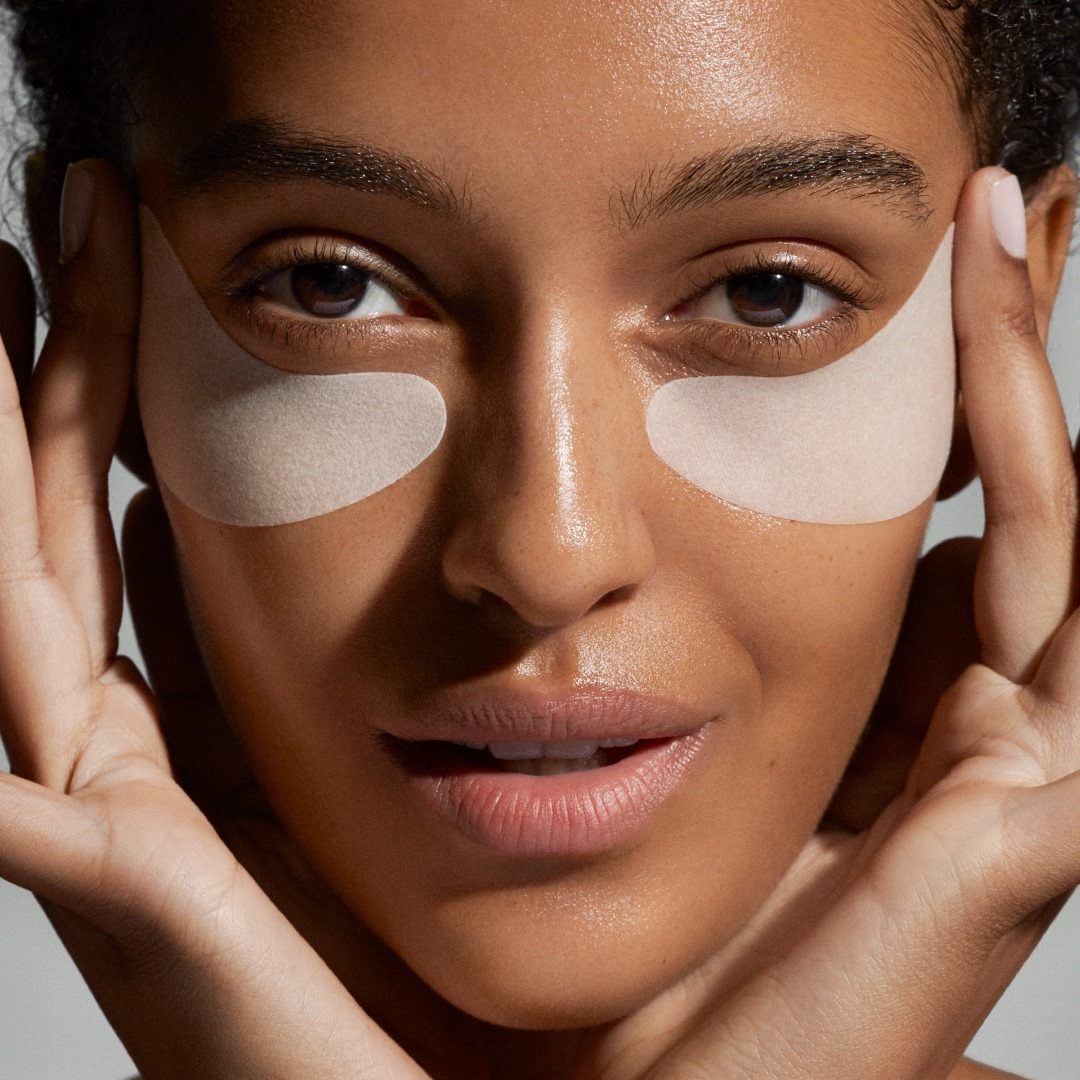
Description: various women apply different forms of Estée Lauder makeup throughout the video while explaining how it helps them in their everyday lives. The video pans through scenes of women of different ethnicities and nationalities, as indicated by their accents. They are then shown going out and succeeding in life, and, at the end of the video, the participants meet up and act friendly with each other and happily.
Goal and Success Measurement
The goal of the campaign will be to achieve increased engagement on the company’s social media content, preferably from users who have not followed its accounts yet. As a result, they would consider doing so, increasing the accounts’ number of followers. Growth on YouTube would be particularly important because of the current small size of the channel. Success will be measured by the average number of likes and comments that content pieces on each platform receive. As the campaign progresses, the numbers should grow, and a suitable success criterion would be an increase of 50% over the figures the company normally gets.
Conclusion
Overall, while Estée Lauder has achieved some substantial results in its social media marketing, its success is limited to two platforms: Facebook and Instagram. It ignores the others, putting little effort into the content produced for them and not acknowledging the traits that can improve success. Moreover, its numbers on the platforms where it has succeeded are much lower than those of its competitor M·A·C Cosmetics, which is particularly remarkable because the two companies are sister brands. It is likely possible for the company to expand its social media marketing extensively, but for that purpose, it will have to learn more about the platforms where it operates and apply extensive effort to promotion.
References
Estée Lauder [@EsteeLauder]. (n.d.a). Estée Lauder. Web.
Estée Lauder. (2021). Web.
Estée Lauder. (n.d.a). Home. Web.
esteelauder. (n.d.b). Estée Lauder. Web.
Instagratification. (2021). Estée Lauder. Web.
Laham, M. (2020). Made up: How the beauty industry manipulates consumers, preys on women’s insecurities, and promotes unattainable beauty standards. Rowman & Littlefield Publishers.
M·A·C Cosmetics. (n.d.b). Home. Web.
maccosmetics. (n.d.). M·A·C Cosmetics. Web.
Raio, P. (2021). Estée Lauder deepens partnership with QVC. Glossy. Web.
Webmaster guidelines. (2021). Google. Web.